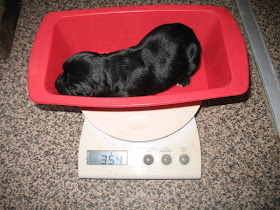There's still no new grass. Farmers are reluctantly putting cows out on pasture, many with calves, but I still see their silage feeders out, topped up daily to keep up with demands the grass can't satisfy until the soil warms up to at least 1 deg C.
With a poor summer behind us and a long winter following on, hay and straw reserves are depleted. Unless we have a reasonable summer for growing, and dry periods for harvesting, farmers will be heading into this coming winter wondering how long they can feed and house their stock on what's left. Some may have to take the hard decision to downsize their herds and flocks, which can depress the price if enough do it all at once.
This is why we talk about the weather so much. It determines our profit and loss.
Sheep are fairing a little better because they can take advantage of small paddocks and forgotten corners. I've seen our neighbours grazing their flock on their own lawn! I've grazed some of my ewes by rotating them on Mike's leftover cover crops of kale and turnip. They need good grazing now, 4-6 weeks before the ram goes in, so their bodies think the livin' is easy and produce more eggs for fertilizing. That's how we get the twins and triplets. Hay won't cut it, and concentrates aren't cost effective, so I walk them from crop to crop and hope they're eating more calories than they're using up while being moved around.
Our first batch of pheasants' eggs is in the incubator - 2,408 eggs.
There are three more incubators to fill when spring comes and turns up the volume on egg production.
I only put my onions, beetroot, and chard in the ground yesterday. When the inevitable rain came, I took cover in the greenhouse and planted beans, peas, tomatoes, and brussel sprouts in trays. Anything that gives me a few weeks' extra growth could be the difference between just enough to harvest and enough to freeze for later. Still, what I wouldn't give to enjoy a hot, ripe tomato out of the greenhouse in summer, instead of cold green tomato chutney out of the pantry in winter!
We had one sunny, hope-inducing day last Sunday and I spent the whole day outdoors at a sheep judging seminar, held on a local farm-
Ring judging
Pen judging and discussion
Polled Dorset breeders from all over the UK were there to debate qualities of the breed, and what they look for when selecting stock. Some on colder exposed farms value a "tight skin" (dense fleece); for commercial breeders with supermarket contracts it was all about the loin and leg size. For this reason, judges often didn't agree on which sheep should get first prize.
There was even talk of what to wear in the show ring, and whether a uniform could be chosen to be associated with the breed. As the Polled Dorset was originally developed in North Carolina, I thought an authentic costume should include a baseball cap with
NASCAR printed on it. I kept that suggestion to myself.
This is Tess, the shepherd's dog-
I always make time to give her a pat. She's 12 years old and still works their 200+ flock every day.
Once when Grumpy the ewe was being particularly uncooperative, the shepherd came over with Tess, In minutes, Tess put Grumpy in her place. Even that cantankerous ewe opted to join her flock rather than stand up to an experienced sheepdog.
There's always lots of pats for our dogs at home too. Podge is bursting at the seams with less than a week to go. I disinfected the whelping kennel, and fitted the whelping box this morning for the impending Podgelets. Podge will go in there alone tonight, and over the next few days I'll watch and see if she settles - a sign that she approves of her maternity accommodation.
All the kennels had a spring clean today, while I anxiously awaited news on Spud who went into the vets to have an infected tooth extracted. I noticed a small, hard swelling on her muzzle a few days ago, and we all feared it could be cancer as flatcoats have an unfortunate predisposition to a specific type. It is a serious infection, but seems that's all it is. It didn't affect her eating, or her happy nature, which made the initial diagnosis so difficult. I don't suppose having one less tooth will slow down her appetite either.
Kitty's abscess is healing and, with a full set of shoes on to protect it, she's striding out on our rides. She's getting older, but she's not slowing down. Unlike Dakota. Last year Dakota suddenly got old, and coming out on rides (even long walks now) makes her stiff in her back legs. I leave her at home for her own good, but I don't think she sees it that way. She still likes to "own" the saddle while I get the rest of the tack ready -
If the rain lets up, we'll ride the horses to Milkweed tomorrow, where they can spend a few weeks clearing up hay that the sheep ignored. If the ground warms up, I can reseed the bare patches in their winter paddock while they holiday at Milkweed.
Speaking of holidays, I booked myself one: a few days riding Andalusian horses in the mountains of Catalonia, followed by a few days recovering from saddle sores in Barcelona. There's
got to be some sun in Spain, right?
Now I have until the first week of June to get riding fit and brush up on my Spenglish (thank god for free iPod language courses.) With a long list of spring chores still to do, including shearing my flock, fitness should be no trouble - ningún problema - at all.





























